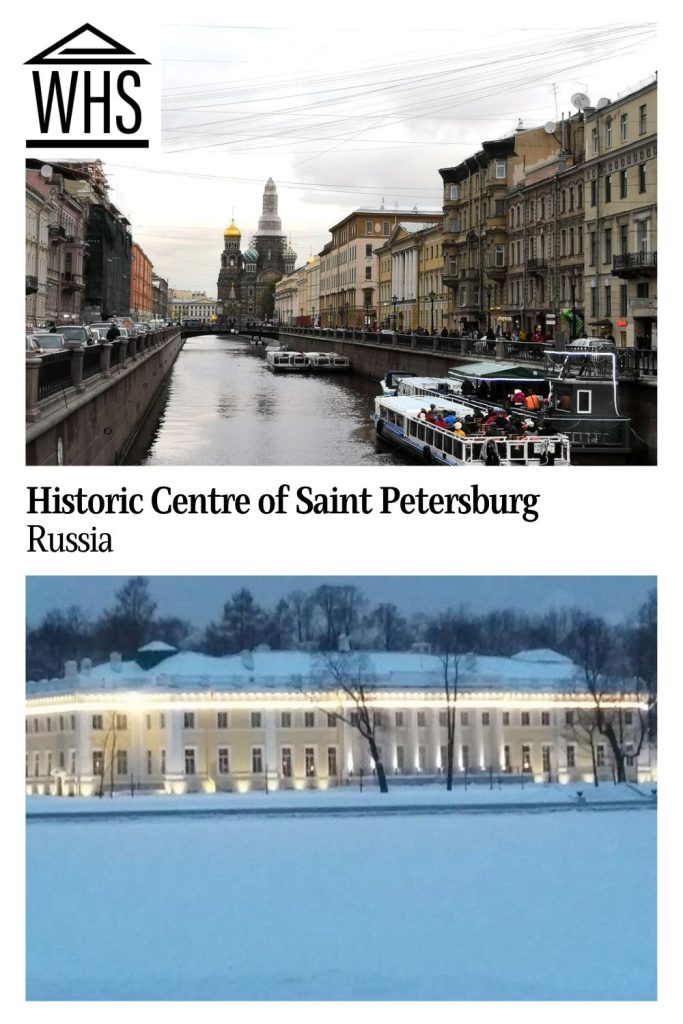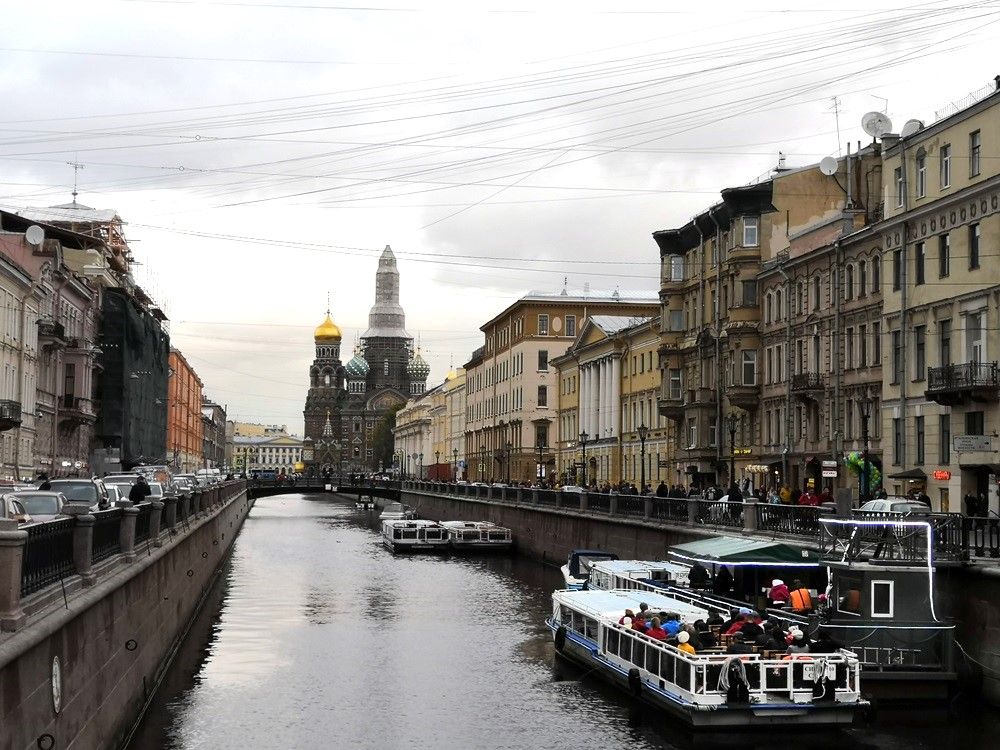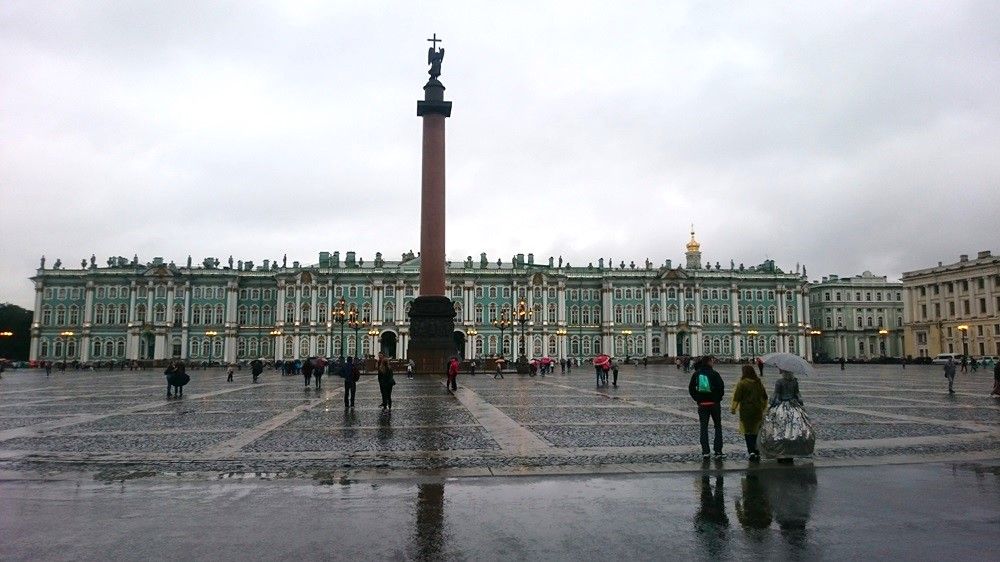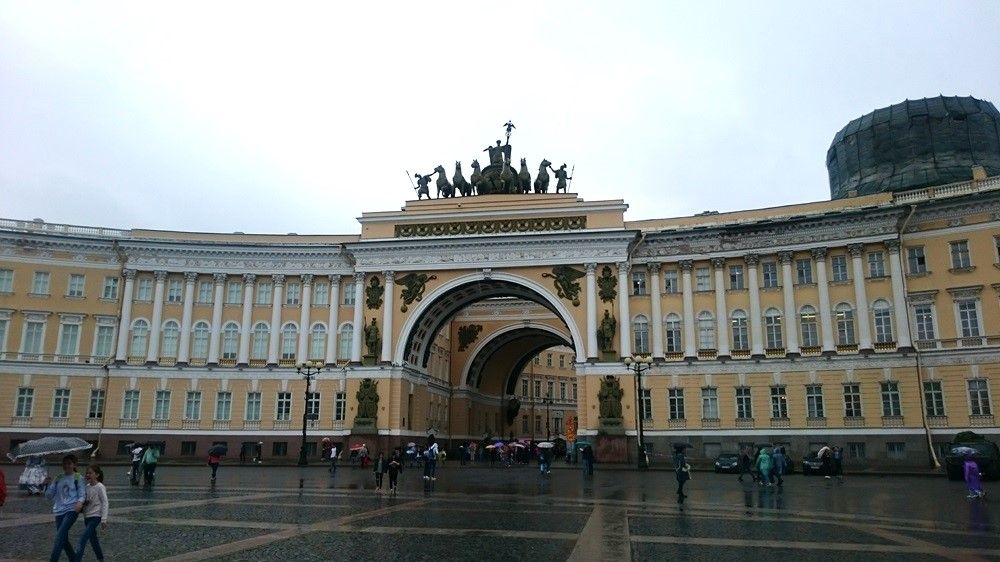Historic Centre of Saint Petersburg and Related Groups of Monuments
By Ksenia Khor
Note: Due to the Russian invasion of Ukraine, now is not the time to visit this site. There is a heightened risk of political instability and many international consulates have limited presence in the country.
What is the Historic Centre of Saint Petersburg and Related Groups of Monuments?
This UNESCO World Heritage site comprises most of the city centre of Saint Petersburg and numerous nearby historical locations, including defensive fortresses and imperial summer residences such as Peterhof (also known as Petergof) and Tsarskoye Selo. In total, there are 126 different locations.
Saint Petersburg was founded by Tsar Peter the Great in 1703. He had an ambitious plan: to create a dazzling European-style capital for the Russian Empire. No resources were spared in transforming what was once nearly uninhabitable marshland into a grand city.
As a result of this tremendous urban project, this UNESCO site is truly vast and is home to dozens of places worth visiting. Among these are the majestic Winter Palace, the formidable Peter and Paul Fortress, and the impressive Saint Isaac’s Cathedral.

Why is Saint Petersburg’s centre a UNESCO World Heritage site?
The historic center of Saint Petersburg and its related monuments represent an incredible artistic, architectural, and engineering achievement, both in terms of the quality of the output and the speed of execution. According to UNESCO, the city has maintained its historic integrity and authenticity.
The city remains home to some of the finest Baroque architecture, created by some of the most notable architects of the time. This architectural achievement influenced architecture in Finland and Russia for the next century or more. As a capital city, Saint Petersburg has also witnessed some of the key events that transformed Russia, from the birth of the empire to the Bolshevik Revolution, which led to the formation of the USSR.

What can you expect on a visit to Saint Petersburg’s historic centre?
Having had the fortune of growing up in Saint Petersburg, I am, of course, biased. However, after traveling the world and living abroad, I can confidently say that there are only a few cities in the world that can compare with Saint Petersburg’s classical beauty and wealth of historical and cultural sites.
The Russians call the city an open-air museum, and with good reason. You can spend days wandering its grand avenues and quiet side streets, getting lost in its many museums and art galleries, escaping the crowds in its parks, and attending theater performances and cultural festivals.
The city does get quite busy in the summer, the peak tourist season. It coincides with the Russian school holidays and boasts the best weather and long days. The latter is a big draw as the cold winters might not be for everyone. Expect long queues and crowds at the most famous tourist attractions then.

However, it’s relatively easy to escape the crowds by exploring areas away from the main tourist streets and attractions. Also, despite Saint Petersburg being a popular tourist destination, it doesn’t receive as many visitors as other major European cities such as Paris or London.
This is more a result of a burdensome Russian visa regime for visitors and underwhelming tourist marketing efforts than the quality of experience you will enjoy there.
Is Saint Petersburg’s historic centre worth visiting?
Yes, Saint Petersburg is undoubtedly worth visiting and deserves a special trip, especially if you can jump the visa hoops. Many tourists often visit the city for just a day as part of the popular Baltic cruises. However, a single day is simply not enough to even cover the key sites in the city centre, let alone any of the imperial summer residences on the outskirts of town.
Depending on how much ground you want to cover, I would recommend spending between three and five days in the city. While you won’t see everything that Saint-Petersburg has to offer, this should give you enough time to see the main landmarks and take some time to wander around the city, soaking in its special atmosphere.

What sorts of travelers would like the Historic Centre of Saint Petersburg?
The Saint Petersburg UNESCO site is a dream destination for history buffs, art lovers, and architecture enthusiasts. If you’re a fan of classical music, opera, and ballet, the city is sure to delight you with its world-class performances. And if you need a break from all the art and culture, there are excellent dining, nightlife, and shopping options to keep you busy.
Tips for visiting Saint Petersburg
Winters in Saint Petersburg are cold, dark, and often seen as miserable, leading many visitors to avoid this time of year. However, the city does possess a special charm during this season. If you choose to visit in winter, be sure to dress for the weather with appropriate footwear, layers, and gloves.

Be prepared for a language barrier. Although the situation is improving in tourist areas, many locals still do not speak English fluently. I recommend learning a few basic words and phrases to make your trip easier.
Saint Petersburg boasts an excellent underground train system, which I highly recommend using during your visit. You’ll find that some stations are architectural masterpieces in their own right.
If you plan to attend any music or dance performances, book your tickets in advance to avoid disappointment.
If time allows, I recommend combining your trip to Saint Petersburg with a visit to Russia’s capital, Moscow. Other UNESCO World Heritage sites, such as the Historic Monuments of Novgorod and Surroundings and the Churches of the Pskov School of Architecture, are easily reachable from the city.
Where is Saint Petersburg?
Saint Petersburg is situated in the northwest of Russia, on the Baltic Sea. It is served by an international airport, Pulkovo, but many visitors to Russia find themselves landing in Moscow first.
Due to international sanctions, only a limited number of airlines are currently able to fly into Russia. These include Turkish Airlines, Qatar Airways, and Emirates.
If you’re traveling to Saint Petersburg from Moscow, you have the option of catching a domestic flight or taking a high-speed or overnight train.
From Pulkovo Airport, you can take a taxi or a bus to the historic city center. Those traveling to Saint Petersburg by train will arrive right in the heart of the city center, as that is where the main railway station is located.
To get to the imperial summer residences, you can use public transport such as a train, bus, or high-speed boat (specifically to Peterhof). However, the journey can be long and somewhat tedious. For such destinations, you might be better off visiting on an organised tour.
For more information about the Historic Centre of Saint Petersburg and Related Groups of Monuments, see its official website.
Have you been to St. Petersburg? If so, do you have any additional information or advice about this UNESCO World Heritage site? Please add your comments below!
